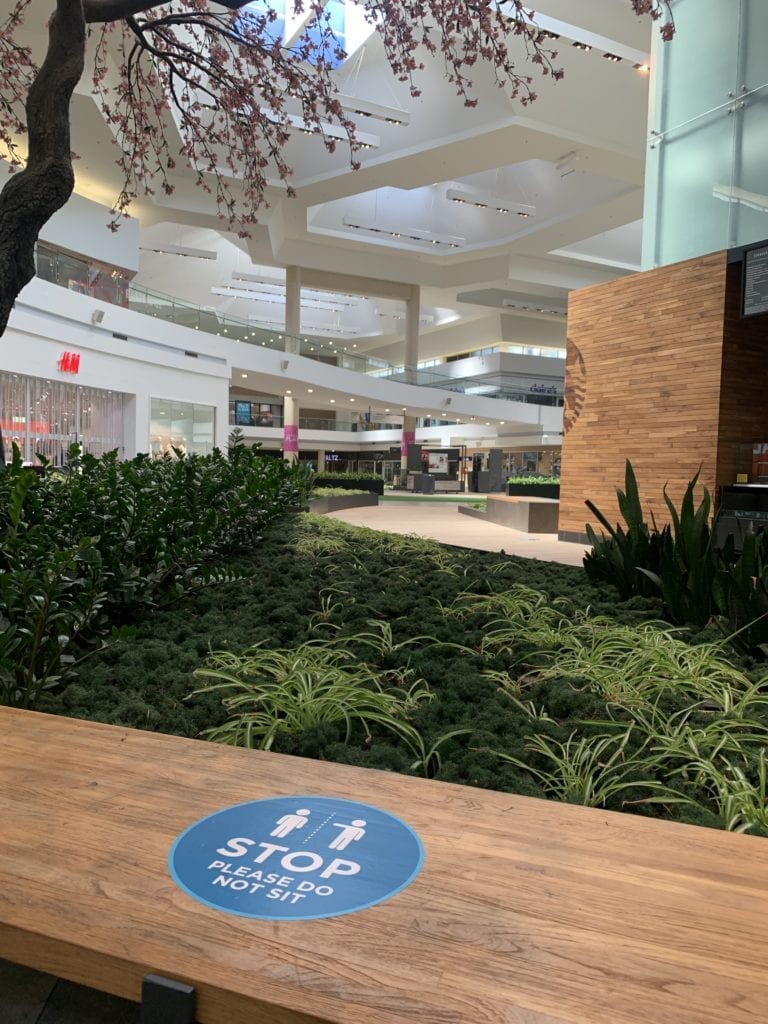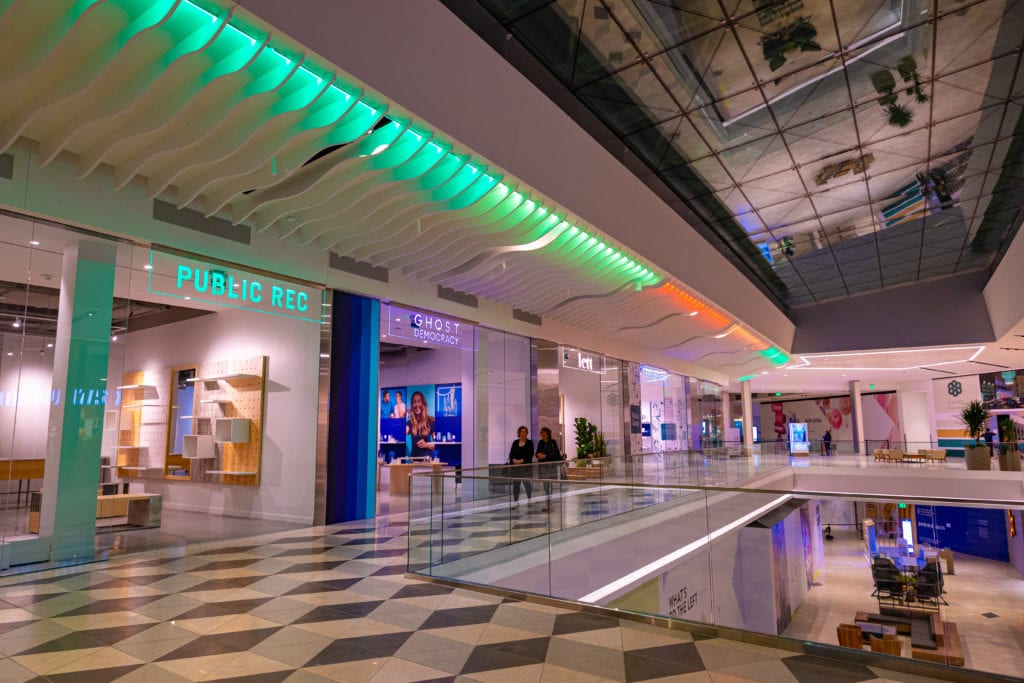Long before the coronavirus spread, retail was changing as big box stores’ popularity sank and experiences became the new must-have. But the pandemic flipped the industry on its head in a new way.
Those changes are being felt across businesses in Silicon Valley, a region with several shining examples of retail hotspots that serve as models for the rest of the country, including the busy Santana Row and Valley Fair Mall. In that way, South Bay bricks and mortar retail has held its own against the rise of internet shopping sites, like Amazon.
Now questions linger about retail’s future as it competes not just with online retail, but a contagious virus that’s reversing many of the trends and changes from before the pandemic.
“There’s going to be a fallout because of this, there’s no doubt that there’s going to be some challenges,” said J.J. Taughinbaugh, senior vice president for investments specializing in retail for brokerage Marcus and Millichap. “There will be an increase in vacancy and landlords and tenants are going to have to work through these issues and as consumers, we need to support our local businesses.”
But many of the customer demands that drove retail success before the coronavirus have changed. For instance, at the end of 2019, personal service retailers overtook the number of traditional shops selling goods in the U.S., boutique pop-up shops became a hot commodity and restaurant openings were on upward trajectory, data from brokerage firm JLL shows.
Today in Santa Clara County, many personal service retailers, including nail salons, hairdressers and specialty gyms, remain closed under the county’s shelter-in-place order issued in March. Meanwhile, nearly every other type of retail purchasing has slowed, except the basics, like groceries, the data shows.
On Tuesday, the county’s top health officer, Dr. Sara Cody, said the county isn’t ready to lift more restrictions, despite neighboring counties reopening at a faster pace.
Restaurants could serve customers outdoors as of June 5, but some worry the change is not enough, in part because many eateries have little space and money to set up new tables outside. San Jose officials are working on a new “San Jose Al Fresco” initiative to open public spaces for dining, cafes, gyms and other retailers, though the program is in its early stages.
But in places where those changes have already happened, such as the privately-owned Santana Row — a mixed-use retail hotspot on San Jose’s west side — restaurants over Father’s Day weekend saw sales at pre-coronavirus levels, said Collette Navarrette, director of marketing for Santana Row owner, Federal Realty Investment Trust’s West Coast division.
Closing certain streets and letting seating spill onto sidewalks has been so successful that Federal Reality is mulling making those changes permanent, Navarrette added.


“We absolutely are looking at, ‘OK, how are people reacting to these closed streets?’ and it’s very positive,” she said. “Is that something that we should do going forward? Absolutely, those conversations are taking place.”
South Bay malls reopened June 15 with new safety rules, but how many retailers survive after months of being shuttered remains to be seen.
At San Jose’s Eastridge Center, which underwent a major overhaul to modernize the east side mall in 2018, foot traffic last week was about 55 percent of what it was last year. Eastridge owner, Pacific Retail Capital Partners, is working on ways to get that number up, including creating new parking lot events and pushing retailers to reimagine their physical and digital presence to bring in more customers.


So far, two retailers have opted not to renew their leases during the pandemic, according to an Eastridge spokesperson, though they did not reveal which ones.
“We are actively working with all of our retailers to retain them and provide accommodations for their businesses,” officials said in an email to San José Spotlight.
Taughinbaugh, of the retail brokerage Marcus and Millichap, said between 60 and 70 percent of his clients have re-negotiated leases in recent months. The most affected retailers are the smaller operations, he said.
“For the mom-and-pop retailers and in these downtown cores, we’re seeing either a deferment of rent for a few months to the next calendar year or people are giving them a half rents and deferring that until next year,” he said. “Very seldom are people just just saying, ‘No, we will not give you a rent break.'”
And shoppers are returning to their favorite stores, mall owners say.
At Valley Fair, where owner Unibail-Rodamco-Westfield recently unveiled a $1.1 billion renovation — complete with new designer stores, a flagship Bloomingdales and a two-story Apple store — retailers saw double digit increases in foot traffic through the first week the mall reopened, said Kate Diefenderfer, director of marketing.


The mall also introduced a new “digital queue system” called Line Pass that lets customers book an appointment to shop at a store.
“Guests have quickly adopted our safety measures as well as enhanced amenities and services,” Diefenderfer said.
While those signs may be promising, statewide and nationwide infection rates show the pandemic isn’t letting up. Gov. Gavin Newsom this week told reporters the virus was still in its “first wave” throughout California.
However, when the virus does recede and retail starts to reopen more broadly, Taughinbaugh is optimistic it will be a vibrant industry in Silicon Valley again.
“It’s going to come back to normal spades and people are really going to be excited to be around their friends and family,” he said. “I think people have to look forward to that and now that everything’s been taken away from us to some regard, it really gives us a perspective of how lucky we are.”
Contact Janice Bitters at [email protected] or follow @JaniceBitters on Twitter.



Leave a Reply
You must be logged in to post a comment.